In the interior it is important to take into account every item, think over the composition, themed association of elements. The unity of the style can be achieved when finishing the walls with various types of fabric. Fashion has a property to return, and it concerns not only clothes. Interior design trends are also cyclically replaced by each other. Today, people strive for the opportunity to do without any assistance, so the finishing of the walls with a cloth is gaining popularity.
What fabric use
Technology for decorating the premises with atypical materials has several advantages. From the point of view of style it looks exclusively, expensive and luxuriously. The network has a lot of photos on which the interior is made in one color or stylistic solution. The functional part is distinguished by additional sound insulation, makes it possible to breathe walls.
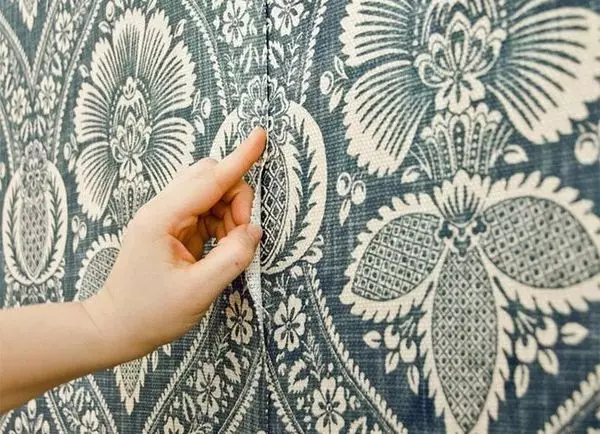
Considering installation and care, additional advantages appear, such as:
- ease of care;
- ease of installation;
- Environmental purity.
In addition, there is no need for complex surface preparation for finishing. High-quality fabric, additionally treated with water-repellent and refractory composition, is not cheap. This is perhaps the only drawback. To get a good result, you will have to spend. As a result, it will turn out a gorgeous room with original design. Indeed, fabric is able to improve any room. Unlike paper, it adds to the interior of the comfort and warmth.
To decorate the room, textiles use the following material:
- velvet;
- tapestry;
- brocade;
- silk.
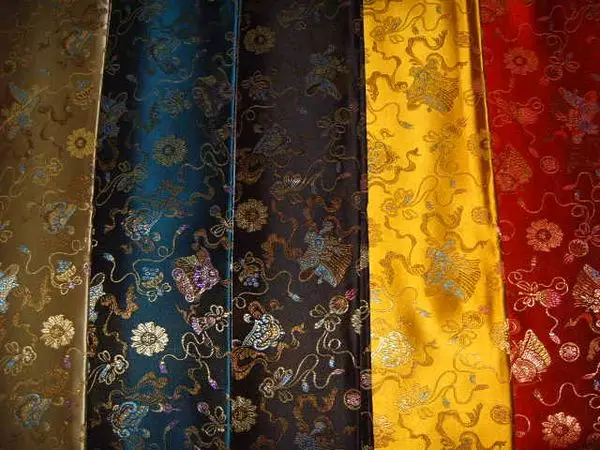
During the Renaissance period, such fabrics could only be found in no noble homes. Now they are related to a number of expensive, use for the manufacture of clothing, upholstery of high-class furniture, and the curtains of the tapestry are considered an indicator of wealth. For the facing of the walls of natural textiles suitable jute, jacquard or sisal. Synthetic fabrics, such as polyester, polyacryl, viscose do not fade in contrast to natural, they are durable and worse absorbed dust and smell.
Article on the topic: Protection against electric shock
Special attention should be paid to how material becomes in the sun. Figure and color should not tire eyesight. A good example for decoration can be called Belgian fabrics that are easy to apply on the walls, they do not need to be sophisticated. Their jacquard drawing has a Teflon coating, resistant to moisture and scratches. It looks rich and beautifully on the walls of Swiss textiles with a pattern applied with a laser.
Ways finish
On the Internet there are many video reviews on the selection of the type of installation and material. Initially, only one way of fastening textiles on walls and flies was known. The material was tensioned with a solid cloth across the entire width. Then there were more convenient methods.
In the interior you can use three decoration options:
- drapery;
- sticking;
- stretch.
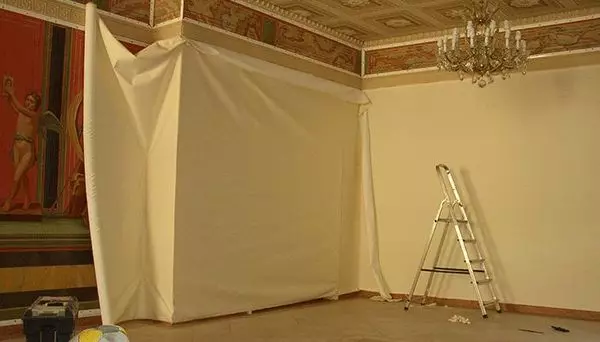
Each of them is appropriate in specific conditions. If you plan to save the interior for several years, then we choose a stick. Such rooms like a dining room, a kitchen, the restroom is not recommended to be separated by textiles. It absorbs odors, and despite the impregnation, the dust attracts, which is not so easy to clean.
Tensioning
Tilling tissue under the rail is probably the hardest way.The canvas must be fixed with nails and tighten the cloth in the upper corner. On the tightened fabric we mount the decorative rail, fastening it with self-threaded heads. Further, we carry out the same work and at the bottom of the wall. In order for the cloth to look at well, it is necessary to properly cut the corners. You can stretch the cloth on the rail, after attaching the device and insulated the wall with a thin layer of foam. The design is connected by furniture brackets from top to bottom, then on the edges.
Sticking
The method is based on a number of simple actions. In a specialized store you need to choose the suitable option for the interior. Often, the trim textiles sets the mood to the whole design, reflecting on the curtains, the upholstery of furniture and trifles. The material has a tissue surface located on an adhesive basis, rolled into a roll, as wallpaper.
Article on the topic: How to put a linoleum on the Fiberboard: Features
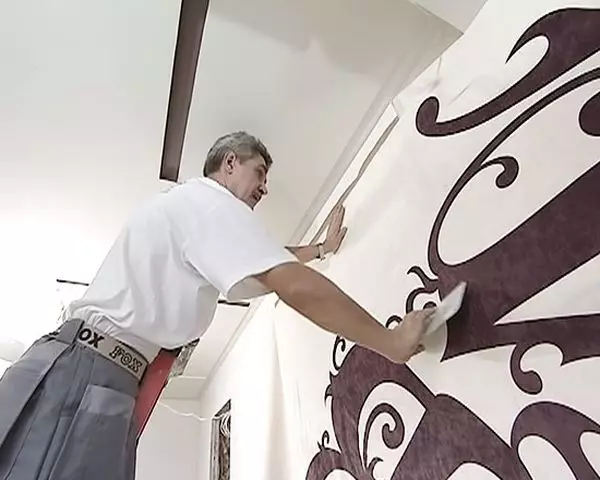
It is clear that without finishing work is not to do. Wall cover with furniture or parquet varnish. Due to the fact that it dries long, you can correct irregularities. We take a prepared segment of the fabric, smoothing out her hands, warming up the iron and stick, gradually smoothing air bubbles.
Drapery
This is a special type of design, consisting in key elements. The interior composition is complemented by a beautifully laid cloth on the wall. There is no need to acquire a large amount of material, to prepare the basis. In addition, the element can be removed at any time.Preparation and step-by-step instructions
It is necessary to pre-prepare the basis. First of all, you need to wash the painted walls or remove the old finish. If there are cracks in the wall, holes from nails and brackets, they are recommended to sharpen. Follow the lack of drops in the framework of the foundation. This effect can be achieved in three stages:
- primer (dry 5-6 hours);
- leveling putty (dries 24-40 hours);
- Finish putty, handling sandpaper.
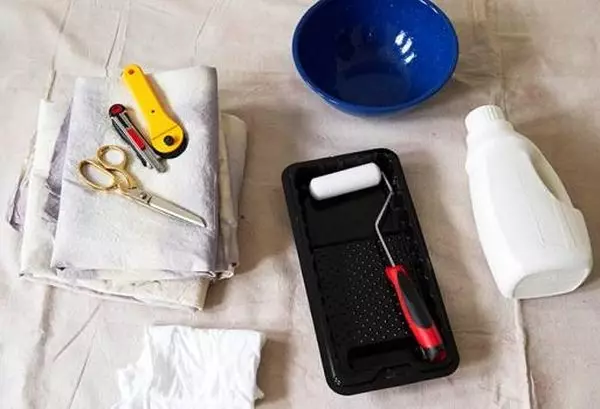
Walls made of plasterboard, plywood and partitions from chipboard also require preparation.
Here you will definitely need to close the seams and places of attachment. Before sticking, the fabric necessarily check for shrinkage. To do this, cut off a small piece, wet it and dry it. The process itself is called a decament. Next should be measured with textiles from the ceiling to the floor, cutting into stripes for convenience when sticking.
When stretching on the rake, the band, on the contrary, it is necessary to sew a liner with a seam to achieve a width of equal wall. The glue-processed part is approximately 1 meter. It is applied to the material strip and gradually smoothed. Then, with the help of nails, rains are promptly installed. Nails can be removed after complete drying. Specialists are recommended to be treated with nitroloma.
Video "Finishing wall cloth"
In this fragment, the popular TV show shows a cloth wall finish.
